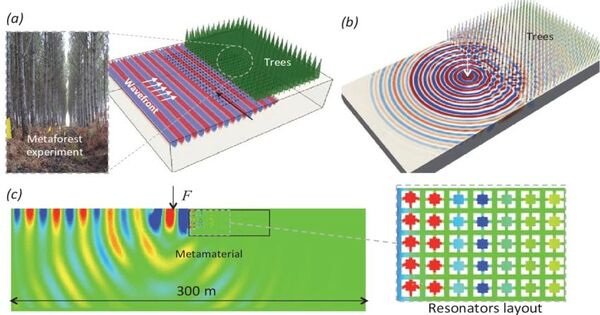A seismic metamaterial is a metamaterial that is intended to mitigate the negative impacts of seismic waves on manmade constructions located on or near Earth’s surface. Current seismic metamaterial ideas use boreholes, trees, or suggested subsurface resonators to function as a large-scale material.
Seismic metamaterials are materials that have been developed to control and manipulate seismic waves, which are waves of energy caused by the abrupt release of energy in the Earth’s crust, such as during an earthquake. These materials are inspired by the concept of metamaterials, which are artificial materials designed to have qualities that are not found in natural materials.
The purpose of seismic metamaterials is to reduce the effects of seismic waves on structures and infrastructure. By regulating seismic wave propagation, these materials have the potential to prevent earthquake damage to buildings, bridges, and other important infrastructure.
Artificially produced seismic waves have been seen to reflect as well as attenuate the bandgap. These are the first experiments to show that seismic metamaterials can be detected at frequencies lower than 100 Hz, when Rayleigh waves cause the most damage to manmade structures.
Seismic metamaterials are often made up of arrays of small, repeating elements that are intended to interact with incoming seismic waves in certain ways. These machines can be programmed to change the amplitude, frequency, and direction of seismic waves, effectively directing or dissipating their energy away from structures.
Research into seismic metamaterials is still in its early phases, but it has the potential to improve the resilience of structures and infrastructure in earthquake-prone areas. However, real application of seismic metamaterials at scale may take several years, as researchers refine their designs and assess their effectiveness through experiments and simulations.
















